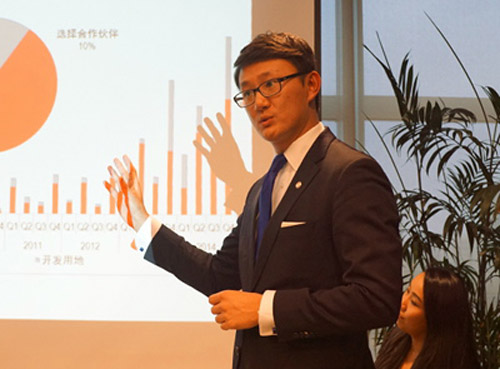
China overtook the US to become the largest cross-border real estate investor in the third quarter of this year, with total investment in the first nine months already surpassing 2015’s record volume, according to JLL data.
Investors from mainland China, including state-owned enterprises, insurance companies and sovereign wealth funds, have invested almost US$18 billion into commercial property assets internationally in the first three quarters of this year, up more than 50 percent on the same period of last year. The US and Hong Kong were among the key investment destinations for mainland Chinese.
Combining residential and land purchases, total transaction volume reached US$21 billion, which is 30 percent ahead of 2015’s volume. Last year’s volume was a 45 percent gain from total transactions in 2014.
“The Chinese have now overtaken the Germans and Americans as being the most consistent overseas investors and they could well retain this position for many years to come,” says David Green Morgan, Global Capital Markets Research Director. “The capital base in China is enormous and they are only just embarking on both investing into real estate and looking at opportunities globally.”
JLL estimates that the Chinese insurance companies alone could invest US$250 billion directly into property, based on their current AUM (assets under management).

Darren Xia, head of JLL’s International Capital Group for China
China’s investment in commercial and residential real estate in recent months has centred on one of two key trends: the search for stability or opportunity, says Darren Xia, Head of International Capital Group at JLL. “Earlier this year, with geopolitical risks, including uncertainties over Brexit and a slowdown in economies in Asia Pacific, the US has provided the market with stability,” he adds.
Data released in October showed that the US economy grew at the fastest pace in two years in the three months to the end of September. The world’s largest economy grew at an annual rate of 2.9 percent, according to the US Commerce Department.
Separately, mainland Chinese real estate capital flows into Hong Kong, a key hub for investment in and out of China, continue to rise. Mainland Chinese investors have invested a total of HKD 16,959 million into commercial properties in Hong Kong from January to October of this year.
Among the notable overseas transactions by Chinese investors were Anbang Insurance Group’s acquisition of US Strategic Hotels and Resorts from Blackstone for almost US$6.5 billion and Chung Kei Group’s purchase of Hong Kong’s One Harbourgate East Tower for US$580 million.
“Chinese investment overseas has been in line with the government’s Go Global policy,” says Xia.
“Besides yields, the quality of the asset matters to a Chinese investor. An asset with good visibility and branding, notably those in Central Hong Kong, is highly sought after.”
The search for opportunities has led Chinese investors to look for real estate bargains following the fall in the value of the British Pound. The pound has fallen about 17 percent year-to-date since Brexit. Mainland Chinese investors have invested a total of GBP1.4 billion (US$1.76 billion) into U.K commercial real estate in the first nine months of this year.
The annual rate of growth of Chinese outbound capital has not dropped below double digits over the last seven years. From just under US$1 billion in 2007, annual exports of capital are now well above US$20 billion a year, according to JLL data.
According to China’s State Administration of Foreign Exchange (SAFE), which regulates cross-border fund flows, during the first nine months of this year, individuals and companies made net foreign exchange purchases of $243.4 billion, though the pace is down from the $465.9 billion recorded in 2015 when a plunge in Chinese stock markets unnerved investors.
Meanwhile, China’s foreign currency reserves have fallen to $3.17 trillion at the end of September, from a $3.99 trillion peak in June 2014, indicating fresh capital outflows and that the Chinese government sold US dollars to prop up the yuan’s value.
For the remainder of 2016 partly on the back of this Chinese expansion we believe global commercial investment volumes will be around US$630 billion, says Green-Morgan. “Our provisional forecasts for 2017 are showing that activity could bounce back towards the US$700 billion mark on the continued weight of capital looking at real estate and a continued underpinning of performance from stable occupational markets.”
Mingtiandi
Please
contact us in case of Copyright Infringement of the photo sourced from the internet, we will remove it within 24 hours.

